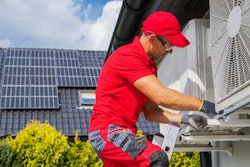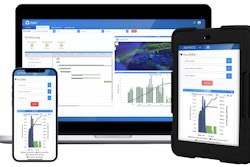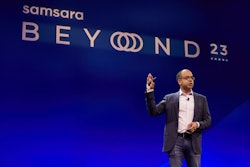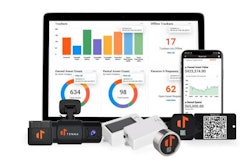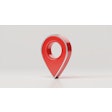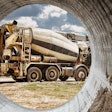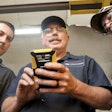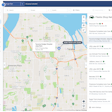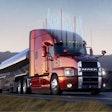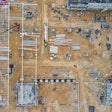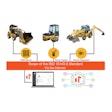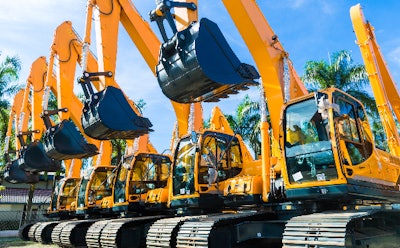
PART I Trackunit Builds Out a Construction Equipment Management Software Platform
PART II DPL Tracks Broad Asset Classes for Dealer and Rental Fleets
PART III LHP Delivering Predictive Analytics with Cummins
That branded fleet monitoring portal your construction equipment rental company offers you may in fact have been created by Westfield, Ind.-based LHP Telematics.
The company provides telematics portals for major rental software equipment management systems that address more than half of the market. The software is typically branded by a rental company or dealership, with LHP teams often consulting on advanced maintenance and fleet management analytics.
“The focus here is construction,” LHP’s business development consultant Michael Jakab said. “About 80% to 90% of our revenue and business activity is really off-highway equipment, construction equipment, agricultural equipment, but mostly construction. We do have an active role with the transit systems as well.”
A typical LHP customer will be addressing a large, mixed fleet cutting across OEM telematics from John Deere and data from other fleet management software products like Trackunit.
“A large fleet can be privately held by Halliburton,” Jakab said. “It can be a large rental company that rents out equipment. Or it could be held by the dealerships.”
While a broad spectrum of products in the IRONPROS GPS Asset Tracking and Fleet Management category can aggregate equipment data from mixed fleets, there are tricks to realizing business value from that data, according to Jakab.
“The biggest challenge that we see … is that we think that most people that have endeavored to begin connecting assets and leveraging that capability don't quite realize the value they expected,” Jakab said. “They don't get their money's worth quite frequently. And what tends to hold them up is the integration or the aggregation of this information and making it available with their business system data. The silos that exist out there tend to keep the fleets sort of underachieving. And we think the trend that's going to change that is really pre-integration with software solutions.”
This is where integration with rental business management software comes in.
“Even a moderate or a large size rental company with thousands of assets in the field struggles to do this on their own, and they need help from their suppliers, their vendors,” Jakab said. “… And right now, a lot of these business software providers in the rental business want to be Switzerland. They want to live with everyone and, and, you know, accept everything, which is fine.”
But in order to benefit from asset data brought into rental software, an integrated solution must add value in ways that solve problems for the end user. LHP has grown from its initial release in 2008 for OEM telematics.
“So, we started with that tough problem, excelled at that and in 2015, through relationships with John Deere, we enhanced the system further to consider the dealer network and also the dealer rental requirements,” Jakab said “And in the last decade or so we’ve launched about 17 OEM programs for thousands of dealers and subfleets. And we've got tech partners to help us get the job done.”
Apart from a software-as-a-service (SaaS) application to provide managerial access to data, LHP sources tracking and telematics units from other vendors, or some customers rely on OEM telematics or devices associated with other tracking solutions running in the business.
“One unique element is the hardware we're providing is I think the only dual camera device out there with Wi Fi, BLE (Bluetooth low energy), and Ethernet that you can get for around 200 bucks," Jakab said. "I don't think you could find anything else that would match it. The Embedded Linux software, of course, is collecting data at the fringe, at the edge and on the machine.”
For OEMs that install the device at the factory, LHP provides tools to automate the process, plus the application for end users that will usually be branded by the OEM.
Predictive Construction Equipment Maintenance
While predictive maintenance is not broadly adopted yet for construction equipment, LHP is pioneering the field through consulting with their customers, and through a partnership with Cummins. Predictive maintenance is difficult to deal with in aftermarket systems according to Jakab, adding that the LHP had data scientists on staff for about three years exploring the possibilities.
“Unless the OEM has done the work to outfit the asset with some sort of sensor package that gives them that data that would allow them to do the prognostics, it's not a feasible option from an aftermarket perspective,” Jakab said. “Now, you can do it with things like engines because with engines, anybody who as an aftermarket telematics company says that they have prognostics, that's going to tell you when something fails, that's a very thin line to walk. And it's very, very difficult to back that claim up. If you have Cummins’ remote diagnostic connection, and you have tens or thousands of engines connected, and you have that as one centralized data repository hooked up to Cummins remote diagnostic connect, they do prognostics, based on a whole bunch of different stuff. And then we receive it back and put that into our portal.”
Apart from Cummins, John Deere also has a data set capable of supporting predictive maintenance.
“John Deere is neck deep in this,” Jakab said. “They have the amount of data to back it up, they’ve outfitted assets with extra sensors, and they have a huge staff of people that are doing this. As soon as you go down the food chain to smaller OEMs, it's a lot more difficult because the amount of data is not there. And the OEMs are not willing to spend the extra dollars to outfit the assets with the needed sensors for that type of a solution to actually be truly predictive.”
Partnerships and Power for Predictive Analytics
LHP is however a telematics partner for Cummins’ Connected Diagnostics solution. What’s more, they have opened up the data from that partnership to equipment rental customers through sales partner InTempo Software/Rentalman.
“This opens the door for us to access more than a million assets under management with InTempo / Rentalman,” Jakab said in correspondence with IRONPROS. “Our TP1 telematics hardware is approved and compatible with both communities—Cummins and InTempo / Rentalman). It really streamlines the process for a rental company gaining access to fault code analysis and manufacturer-recommended action. And it scales nicely, from one to 100,000 assets! Smaller fleets can have the same advantages as the big boys! And it’s in production!”
While Jakab said predictive intelligence will come more directly from OEMs than aftermarket tools, not every sensor device is robust enough to harvest and relay predictive equipment analytics. An exception is the LHP Platform 1.
The TP1 has 4G North America and 3G/2G global coverage, along with Wi-fi, Bluetooth, and Ethernet for local Networking. The device has 2 CAN lines, supports 12- and 24-volt systems and can handleJ1939, CAN Open, MOD TCP and custom 11 bit/29-bit CAN protocols. The TP1, critically, can be set up with advanced triggers that chain logic together along with counting, timing and calculating min/max averages.
LHP Market Fit
OEMs, large fleets and dealer networks may find LHP a fit, as may an independent rental organization or rental operation inside of a dealer group.
“The company is really founded on that OEM business, so we will chase any OEM out there—they're pretty much all a good fit for us, so long as the equipment is pricey enough that the price of telematics doesn't scare away the OEM,” Jakab said. “And usually, what we find is assets that are more than $40,000 to $50,000 from an end sale price are usually the ones that will just put it on factory installed no matter what. If you get assets into that, you know, $10,000 to $25,000 range usually, the profit margins on them are not necessarily enough for the OEM make it standard. Usually, that's where it becomes factory optional, where the customer has to pay for it as a separate line item.”
LHP’s OEM customers may manufacture 250 assets a year or as many as 15,000 assets a year.
Most of LHP’s dealer network customers come onboard because LHP comes on the OEM equipment they carry.
“We have not spent a lot of time chasing dealer networks directly where we are not the OEM,” Jakab said.
Rental companies become a fit once they have more than 200 assets across multiple equipment types including aerial, earthmoving, generators, compressors and more.
“The value in the rental space is the preconfiguration,” Jakab said. “We're demonstrating productivity gains, not so much in the maintenance or support. Yes, we can show them what, which maintenance is due. We can show them all of their aerial equipment needs and inspections. But we also can show them what's on rent, what's been called off rent, what is the meter hour at a particular location and which customer is at what site.”
